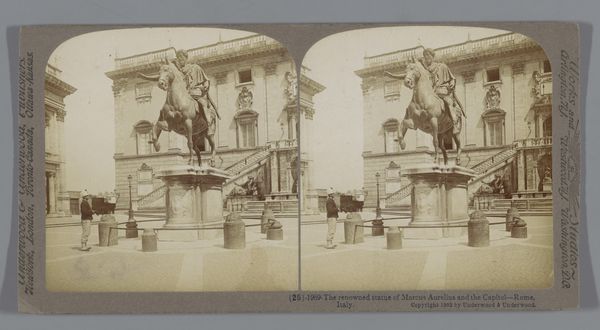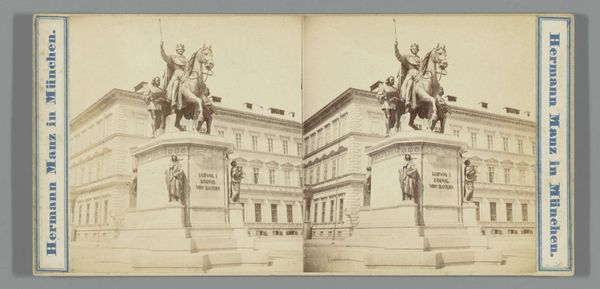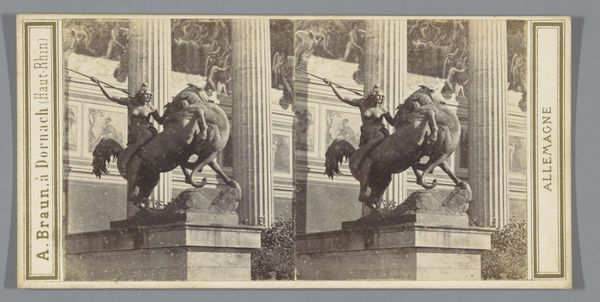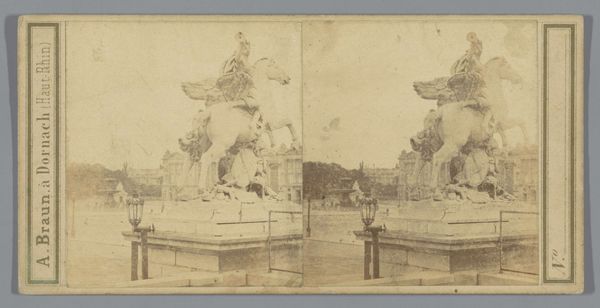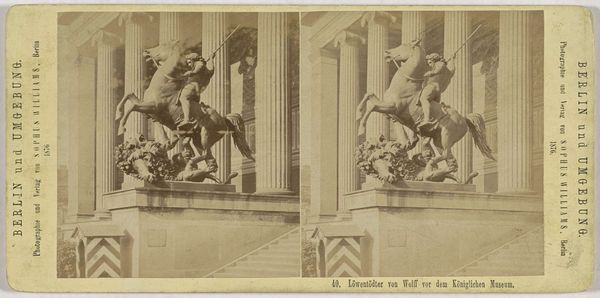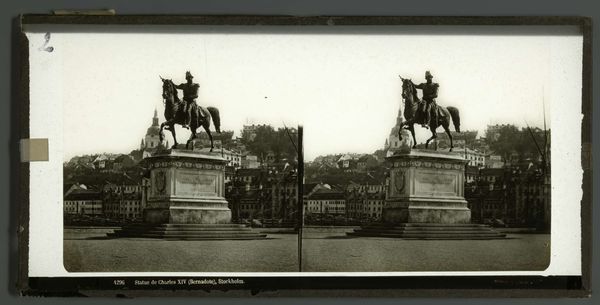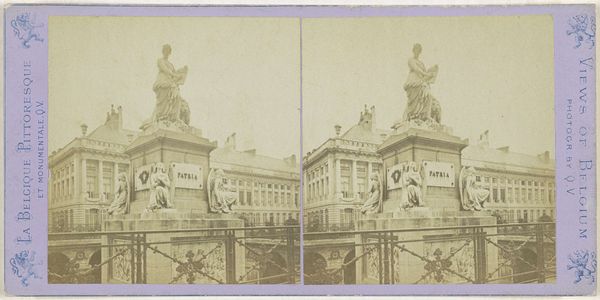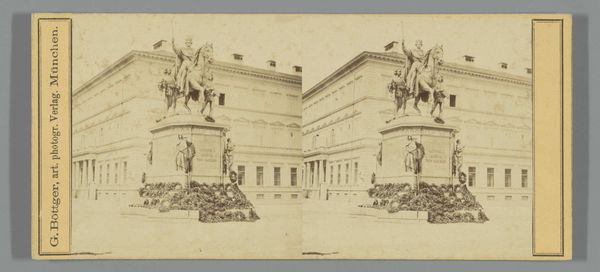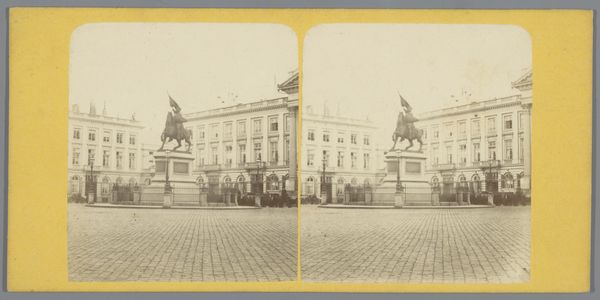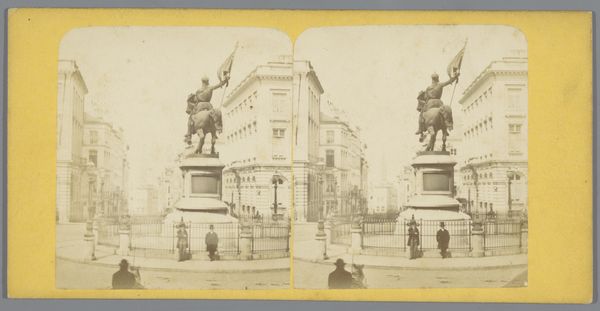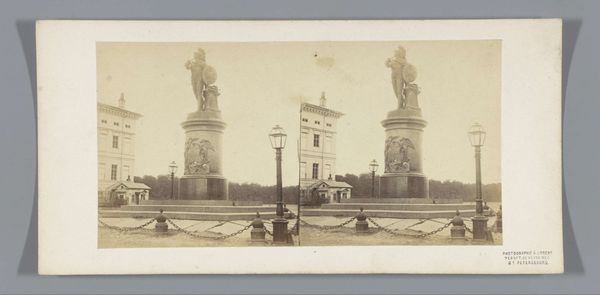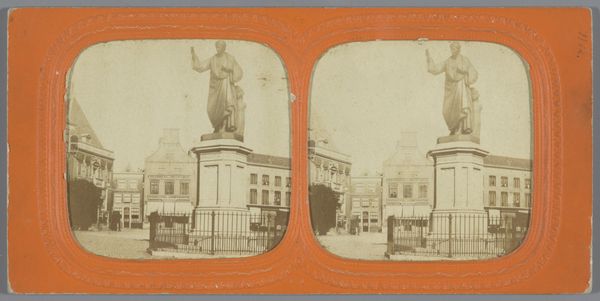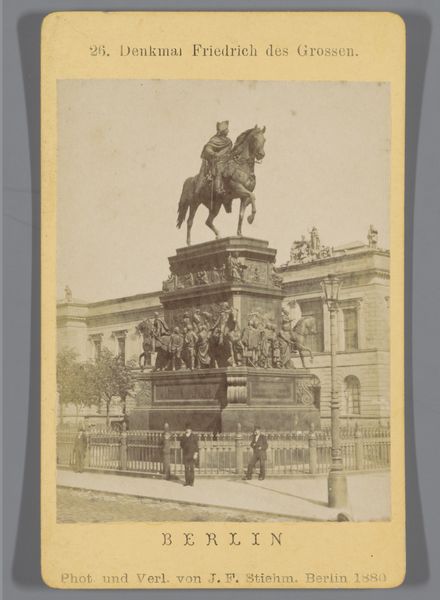
Ruiterstandbeeld van Lodewijk XIV voor het Paleis van Versailles c. 1850 - 1880
0:00
0:00
Dimensions: height 87 mm, width 178 mm
Copyright: Rijks Museum: Open Domain
Curator: Isn't this fascinating? A photographic stereoview, dating from the late 19th century, circa 1850 to 1880. It depicts the equestrian statue of Louis XIV in front of the Palace of Versailles. There's such a ghostliness to it. Editor: My first impression is grandiosity. The architecture dwarfs the people—they are just specs down below near the base. The muted sepia tone adds to the historical feel. You can almost hear the echo of carriages. Curator: It really does feel like a frozen moment. This photograph, in its own way, has become a relic, much like the statue itself. I’m intrigued by this romantic lens that shows the statue in front of such a building, what it symbolized then versus what it represents to people now, centuries later. What does all this wealth amount to? What is a kingdom anyway, but a fleeting performance? Editor: Well, the material presence endures—the bronze of the statue, the stone of Versailles. Someone was laboring away shaping bronze and stone here; they transformed raw material from earth into something considered beautiful. But the fact that the image itself is mass-produced points to its own value and impact at the time as a reproduced photographic image. The layers of production fascinate me, from extraction to presentation. Curator: A dance of power and representation, truly! The sculptor, the bronze caster, the photographer, each playing a part in shaping how we perceive this figure. Each artist interpreting each other. Even the photograph's purpose is interesting to think about, right? A popular form of entertainment, allowing people to virtually visit Versailles. A precursor to our own curated realities. Editor: Exactly! And considering photography's emerging role at the time, its status between art and documentation is being explored. Its easy production and distribution could be the reasons why we’re able to study and view it in the first place. We get a direct link, through process, to a subject otherwise very disconnected from our current time and lives. Curator: It does raise some interesting questions about preservation, doesn’t it? Bronze and paper both battling the elements to preserve memory and symbolism. We're drawn to these tangible remains, both natural and handmade. The light falling across the aged surface, highlighting time’s passage… it invites a slow, thoughtful contemplation of our own fleeting moment in time, doesn’t it? Editor: Absolutely, and understanding the labor involved reminds us that even the grandest symbols are rooted in very earthly and tangible realities of extraction, processing, and social construction. It really offers us much to consider from our own present reality!
Comments
No comments
Be the first to comment and join the conversation on the ultimate creative platform.
